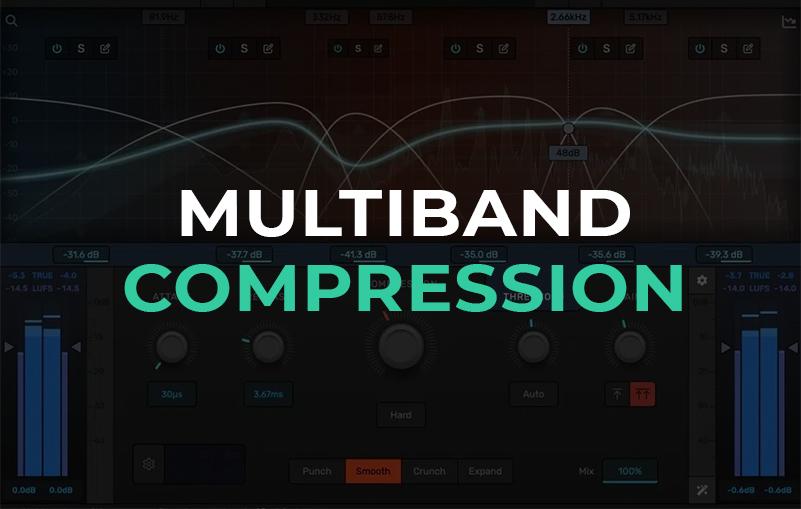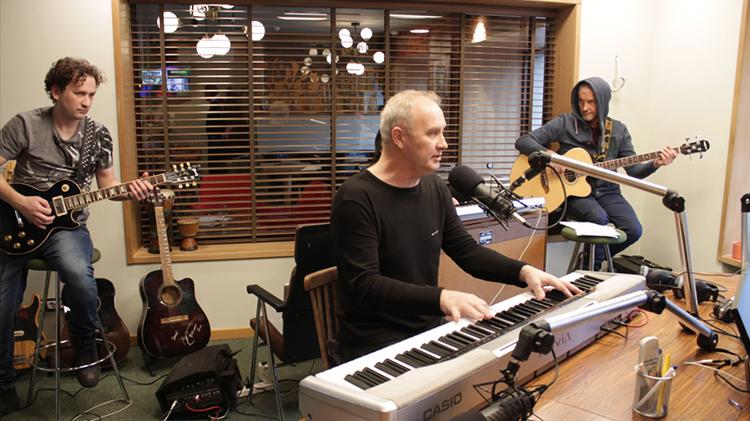Types of melodies

Music is made up of melodies. There are seven standard notes, but none of the hundreds of millions of motifs is repeated. How is this possible? It is all about the features and types of melodies. In fact, it is a melodic feeling embedded in a piece of music or a track. Each person is unique, feels in his own way. That is why musical expressiveness is so different.
Anyone can compose own melodies. If you do not try to repeat anyone, make the melody similar, then the motive will be unique. Such creativity is available to everyone without exception: it does not matter if you are a professional or an amateur.
What is music made of?
Music – is a specific sequence of sounds, composed in tone. Musical instruments and modern technical means are used to play the tones. Music is composed of two general characteristics: time (rate) and spatial (altitude).
Each track sounds different. Have you wondered why?
All the matter in the emotional contact that occurs in the process of listening to tunes. Its impact is large. From the point of view of physics – it is the sound stimulus. However, how nice it is to be annoyed by a melodic track.
Back in school, we were taught that music consists of notes. And indeed it is. Creator of high-rise sounds considered Guido Aretinus – Italian monk who lived in the XI century. He also invented the musical staff and the method of graphic designation on paper.
There are actually many more notes. Only one pitch (octave) has 7 of them. This is a set of sounds, where there is no dissonance. In simple words – in a certain group, notes are melodious and reproduce the harmonious sounds.
What is a melody?
The story consists of sentences, words and letters. In turn, the song consists of a melody, octaves and sounds.
Melody is a sequence of harmonious and euphoniously combined sounds. The most important element in music is its type. Even when you hum a song from memory, you play the melody anyway. A motive that cannot be “thrown away” from the head is a tenacious melodic line, a well-remembered element.
If you think that hits spinning in your head appear out of nowhere, then it is not so. Сomposers and producers carefully consider such tracks. Largely due to the melody – simple, sonorous, well remembered and reproduced from memory.
There is a song and there is a melody. What is the difference?
We try to show using an example of a track that these are different definitions. Melody is part of a musical composition as a rule. A kind of rod on which the entire song skeleton is strung. There are drums, vocals, bass, various instruments, effects, samplers throughout the song. They all sound in unison. It is thanks to the melody – in which all these elements are interconnected.
Melody differs from a simple set of tones by the completeness of the musical statement, the perfection of the melodic turn. Short musical phrases add up to a longer one. The phrase itself is a two-motif formation that lasts two metric measures.
Structurally, a melody consists of several elements:
- Pitch (a combination of a certain set of sounds – most often a small amount);
- Range (distance between the lowest and highest tones);
- Contour (the form of a sequence of melodic elements: phrases, arcs);
- Intervals (measured in semitones, the distance to the first note in a certain key – tonic).
The genre in music, rhythm, harmony, dynamism, sound, and other characteristics depend on the type of melody. You have probably heard when singers or musicians can play a melody strictly in a certain key. It is believed that the narrower the range, the easier it is to reproduce. However, the wider range is potentially more interesting for the listener due to the non-standard, original and complex melody.
Different melody types
There are many musical genres. However, several types of melodies can be distinguished among all of them. In another way, we can call such a motive a melodic movement. Experts define the so-called single sound stream. The melodic line has certain similarities: by analogy with spiritual and emotional movement, there are ups and downs, moving between high and low sounds. Such directions are melodic movement. Here are a few of the main ones.
Horizontal movement
Frederic Chopin is considered one of the most prominent representatives of the horizontal movement in melody. A feature of the melodic line is a repetitive sound with frequent chord changes. Thus, it is possible to diversify the sound, to avoid constant monotony. If we analyze the melodies in which there is a horizontal movement, then the key feature will be the absence of sharp transitions and development. We can often find such motifs in folk songs.
Undulating melody
In contrast to the smooth movement, an undulating combination of sound and tonal jumps stands out. The melody follows certain progressive movements: up and down. No sharp breaks. Therefore, this kind of sound waves can be distinguished in the motive. Musicians achieve a calm and systematic development of the composition thanks to this technique. It is a very popular melodic movement that can be found in professional productions, pop music, folklore. Ludwig van Beethoven can be distinguished among the classics.
Ascending movement
Melodies with ascending movements are characterized by the presence of a large number of high sounds. Johann Sebastian Bach has many such works. The composer achieves emotional tension, uplift using this technique. However, not every such ascending movement is directly related to energy. Rather, it is about the overall emotional state of the composition.
Descending movement
In melodies with a descending movement, on the contrary, there is an emotional discharge, a decrease in the tension present. The task of the composer using this type of melodies is to evoke a sense of balance and calmness in the listener. Especially when it comes to the middle register. Composers are careful when working with the lower register, because with excessive zeal, one can easily achieve a heavy and sorrowful (even mournful) background. Often songs with descending movement are used in vocal parts – for simplicity and convenience.
Melody with jumps
Melodies with jumping movement are compositions that are energetic in terms of emotional background and sound. Most often these are fast-paced songs and melodic motifs. Jumps are narrow and wide. In the first case, the number of instruments is relatively small and monotonous. Wide jumps use a different spectrum of instrumental music. Pyotr Ilyich Tchaikovsky has enough rhythmic melodies and movements in them.
Melody with sequence
A sequence is a repetition of the musical element of a theme at various degrees of the scale. Such repetitions are performed for a logical, planned and consistent play of the composition. In this melody, some borrowings from other types described above can also be used. Compositions with sequential melodic movement are found in Ludwig van Beethoven and other composers.
All melodies, regardless of the melodic movement, are characterized by the presence of a culmination. This is the highest point of its development, which is characterized by certain features: an increased frequency of sound, enhanced dynamics, the use of tonal transitions, waves, ascending and descending intonations.
Mode: minor, major
Mode is a system of interconnection of sounds: both stable and unstable. The most common modes are minor and major. In terms of its features, structure, various characteristics, the minor is seriously different from the major. The first is characterized by a calmer, more balanced sound. Often they resort to it in order to evoke emotions of sadness, sorrow, a romantic mood in the listener. Major, on the contrary, is associated with a cheerful, joyful and life-affirming sound.
In various types of melodies, mode is used to regulate the so-called sound scales and steps. The main importance is given to the first step of the series, which is called the tonic. It is important for a musician to understand and sort out the minor and major modes, since they are the most common in the world. However, the matter is not limited to these two modes. Pentatonic, jazz improvisation, church and many other modes stand out. They are characteristic and inherent in certain cultural traditions, musical features of a particular region. They can be artificially created by composers for various purposes.
Harmony and texture
If you play several sounds on the same guitar, it is not at all certain that you will get a short melodic chord. It is the chord progressions and sound combinations (as well as sequences) that are responsible for how harmonious the melody turns out. Musicians even have a separate academic discipline (Harmony), which they study at the conservatory.
For an outside listener, musical harmony is how melodic and beautiful the music sounds. Architecturally consonant and commensurate in tone and consistent in emotional color sound. Such euphony is texture. A kind of order in the musical realm of modes, sounds, tones and chords.
Registers and timbres
Register in a simplified form is considered a musical range. For example, one of the most expressive sounding instruments in this regard is the piano. It presents three main register classes:
- low;
- middle;
- high.
In the low register, the sounds are a bit muffled, with a characteristic, somewhat heavy tone. This includes bass instruments (and bass vocals). It is customary to associate human vocals with the middle register. It is believed that it is convenient for most musical works and is characteristic of many people (baritone). The high register (tenor) is characterized by the corresponding timbre sound coloring – airiness, lightness. Only a few musical instruments combine all registers. Therefore, the piano has long been a constant companion of composers who creature music.
Rhythmic pattern and tempo
Rhythm is associated with musical tempo – that is, the speed of sound is the ratio of sequences of a certain duration. Music genres (and types) are largely associated with rhythm. The more rhythmic and higher they are, the greater the tendency to such genres as disco, house, techno. The most measured rhythms are found in waltzes. Strong accents are present in the marches. In both cases, the rhythm is clear and consistent. In jazz compositions, on the contrary, the rhythm is implicit and varied. There are fast, medium and moderate tempos.
Strokes
Strokes are variations in sound. These are the sound extraction options that are characteristic of musical instruments. The ways of performing notes cannot be counted. In a broad sense, everything that extracts sound and is subject to tonality (modes) can be folded into a melody. That is why there are so many musical instruments. According to the classification, strokes are divided into stringed plucked, stringed bowed, wind, piano. However, this general classification does not represent many instruments.
Dynamics
Dynamics in a melody indicates its strength and loudness of sound. You cannot do without it when you need to convey a certain image. Dynamics is not needed for lyrical moments. In the march, on the contrary, it gains the highest level of expressiveness.
Suggestions for writing melodies
Melody is a unique sound creation of a person. It is an artistic sequence of melodic modes and tones. Everyone, at own discretion, can create a melodious sequence of sounds that will become a real masterpiece.
Having studied the main types of melodies, pay attention to a few general and specific tips for writing melodies.
- Constantly acquire new knowledge and musical experience;
- Do not stop; keep writing and practicing;
- Do not be afraid to experiment;
- Consider the peculiarity of a particular genre. Collaborate with representatives of different genres;
- Do not limit yourself to a certain musical element. Many works are maximally contrasting;
- Create melodies that come from the heart. Do not try to please anyone. Even to yourself;
- Better make and fix short sketches than big parts;
- Improvise more. From such a spiritual impulse, meaningful compositions arise;
- Only a bad composer blames his musical instruments for anything;
- It is not what you use that matters, but how you use it.










